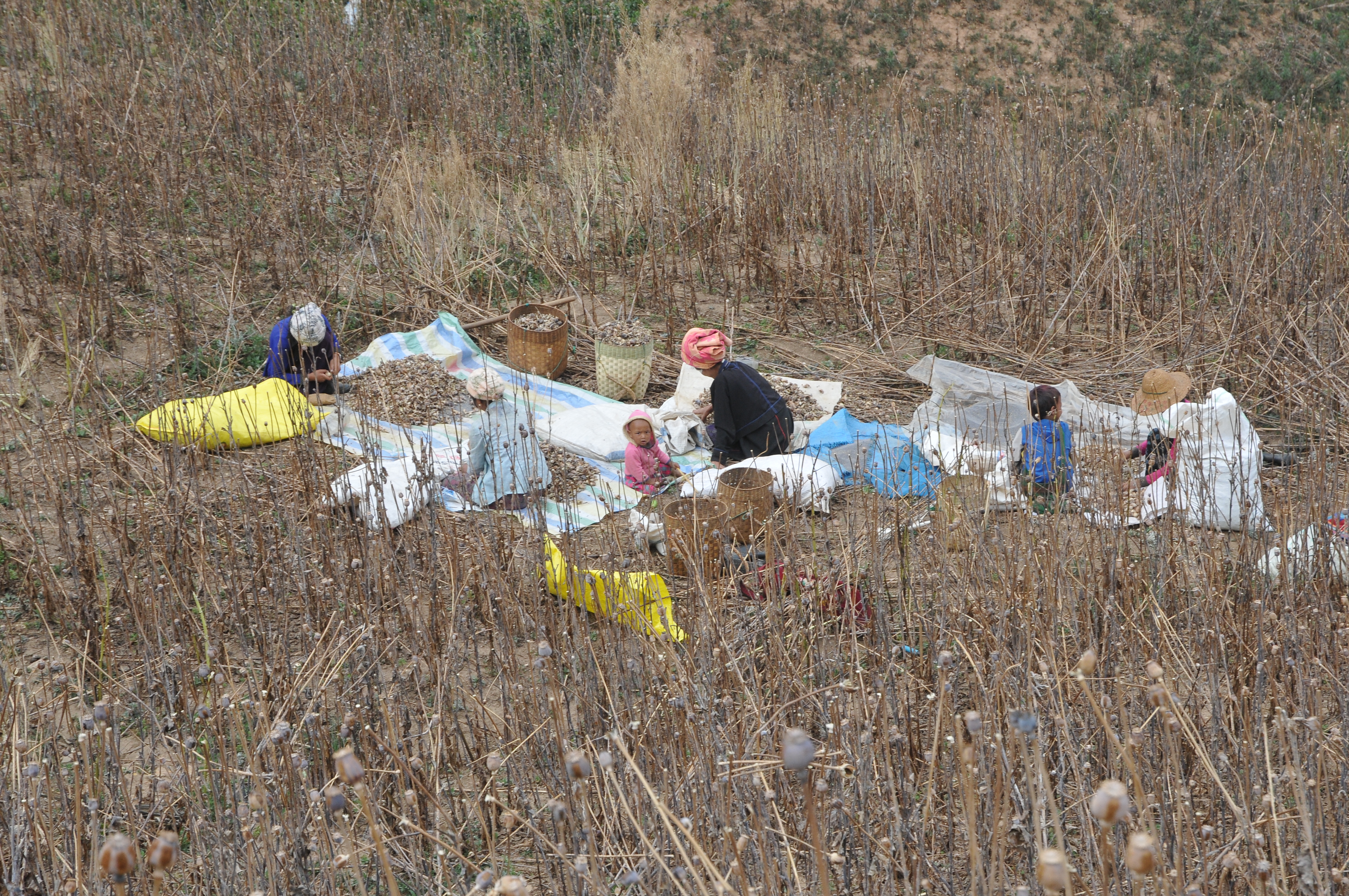|
|
|
In Myanmar, areas under opium poppy cultivation fell to 29,500 ha in 2020, one of the lowest in decades. What does this mean for farmers who grow it? Our new report documents and analyses the causes and consequences of the opium decline in Myanmar and its surrounding regions.
|
|
|
|
Poppy Farmers Under Pressure: Causes and Consequences of the Opium Decline in Myanmar
|
|
 Farmers collecting poppy seeds for next planting season in Loilem Township, southern Shan State. / Photo credit TNI
Farmers collecting poppy seeds for next planting season in Loilem Township, southern Shan State. / Photo credit TNI
|
|
|
The drugs market in Myanmar has seen some profound changes in recent decades, and is changing from being dominated by opiates to one in which amphetamine-type stimulants (ATS) are most prevalent. Poppy cultivation in Laos, Myanmar and Thailand boomed in the 1970s and 1980s, and the border regions of the three countries became known as the ‘Golden Triangle’. By the 1980s, Myanmar (then internationally known as Burma) had become the world’s largest opium-cultivating country. Since the late 1990s, however, Myanmar has seen a significant decline in opium cultivation, although it remains the largest producer in Southeast Asia. It has dropped to very low levels in Thailand, and fallen significantly in Laos. Poppy growing in Myanmar resurged after 2007, but never reached the earlier levels. There is also significant illicit poppy cultivation in India, including in areas bordering Myanmar, but there are no official figures.
This report focuses on analysing the causes and consequences of the declining opium cultivation and production in Myanmar, with some references to Northeast India. It analyses the socio-economic conditions of poppy-growing communities as well as various policy responses and their impacts on cultivation levels and communities. The briefing also highlights the specific issues and needs of women who grow opium. It analyses the link between opium cultivation in Myanmar and the international drug market, and the rise of ATS use and production in Myanmar. Finally, the briefing makes a number of policy recommendations.
|
|
|
|
|
|
|
|